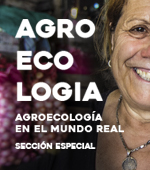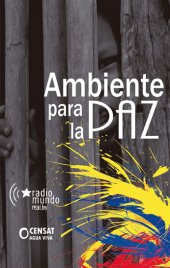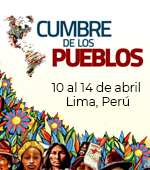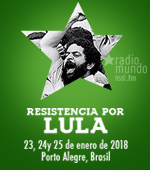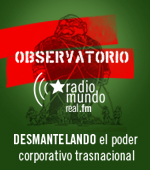English · Español
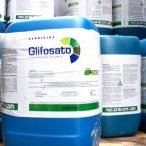
24 de marzo de 2015 | Noticias | Derechos humanos | Soberanía Alimentaria
Glyphosate and Cancer
World Health Organization classifies the “agricultural miracle” herbicide as carcinogenic
This agrotoxic, whose use is associated with the production of GMOs and therefore it is increasingly being used in several countries that still allow the use of this technology, is getting new criticism, in this case by the World Health Organization (WHO), which increased its human health risk classification.
The information reported at world level shows that the International Agency for Research on Cancer (IARC, a branch of WHO) has incorporated glyphosate to the list of substances that are probable carcinogens for humans (category 2A of IARC).
The decision adopted on Friday, March 20, by a panel of IARC experts that met in Lyon, France, also includes insecticides malathion and diazinon in this category.
These findings were met with an immediate response by the Glyphosate “Task Force”, comprised of the most renowned agrotoxic industries globally. However, IARC´s conclusions will be published entirely in the next edition of the agency´s publications. A summary of it was published in specialized journal “Lancet Oncology”.
Glyphosate, a generic, non-selective herbicide, is currently the most widely used agrotoxic in agriculture and was developed and patented by Monsanto, under the commercial name of Round Up, although since the year 2000 there are several versions of this agrotoxic and the transnational giant no longer has an exclusive patent.
In fact, Monsanto and other bioengineering corporations have developed GM varieties of glyphosate resistant seeds (identified as RR “roundup-ready”), turning this into an indivisible technological and commercial combination.
The company has already requested an urgent meeting with the World Health Organization for the agency to “explain” its findings, reported Reuters.
The herbicide has been detected in food, water and in the air after it has been sprayed, according to the report by WHO. The evidence of WHO´s conclusion comes from studies of exposure, mostly agricultural, in the US, Canada and Sweden that were published since 2001.
The IARC has incorporated glyphosate into the 2A group of substances “classified as probable carcinogens for human”. After a year of work, a panel of 17 experts from eleven countries published a document that states that there is convincing evidence that glyphosate can cause cancer in laboratory animals and limited evidence of carcinogenicity in humans (non Hodgkin´s lymphoma).
In other words: out of the five levels that describe the links of substances with cancer, glyphosate falls under the second level of concern.
Concern and resistance
Concern over the presence of glyphosate in food has been a hot topic of debate in the US recently and has contributed to the passing in Vermont of the first law in the country related to mandatory labeling of genetically modified food.
Meanwhile in Argentina, Brazil, Paraguay and Uruguay the movement of rural people, farmers and workers has been growing, in addition to the number of periurban communities exposed to agrotoxics that denounce health impacts caused by different substances. They are also demanding bans, delimitation area requirements and they are demanding that herbicides are used far away from houses and schools.
Independent research carried out in these countries, such as the one by late Andres Carrasco in Argentina, had proven the effects of glyphosate at embryonic level, while traces of the herbicide were found in breast milk of women who live near glyphosate-resistant GM soy crops.
Turning Point
The report partially published by IARC also made reference to the genetic effects of being exposed to the herbicide. It highlights that glyphosate “caused DNA and chromosomal damage in human cells” (something that is directly linked with cancer).
The recognition by a UN agency of the risks of a substance so widely used both in farming and in weeding for urban plants and considered “innocuous” until recently by agricultural experts, will be a turning point in the debate around agrotoxics, said Damián Verzeñassi of the Socio-environmental Health Department at the Medical Sciences School of the University of Rosario, Argentina, according to “La Vaca” news website.
“We need to welcome IARC´s and WHO´s decision to catch up with scientific research. This publication is very important, it is a turning point, since it strengthens the position of the people who have been demanding academics and policy makers to enforce the precautionary principle (taking urgent measures to protect the population)”, said Verzeñassi.
“The World Health Organization admitted it, there are no doubts, the problem is worse than what was said. Glyphosate is following the same path that endosulfan, DDT, cigarettes and Tamiflu”, said the Argentinian researcher.

